From the outside, the cold outbound market looks pretty saturated. Buyers have grown numb to AI written generic sequences and forced first-name merge tags.
The average cold email reply rate hovers below 5%.
Users are more skeptical, inboxes better guarded, and what worked before is now filtered straight to the Promotions or other folders.
And yet, in just two years since its launch, Salesforge, a full-stack outbound sales platform, has bootstrapped to $3M in annual recurring revenue.
Their customers range from one-person teams to Fortune 500 companies. In their words, any business looking to 10x their cold outreach and turn outbound sales into a reliable growth engine is a potential user.
As you can see below, SEO has been a huge part of their growth strategy.
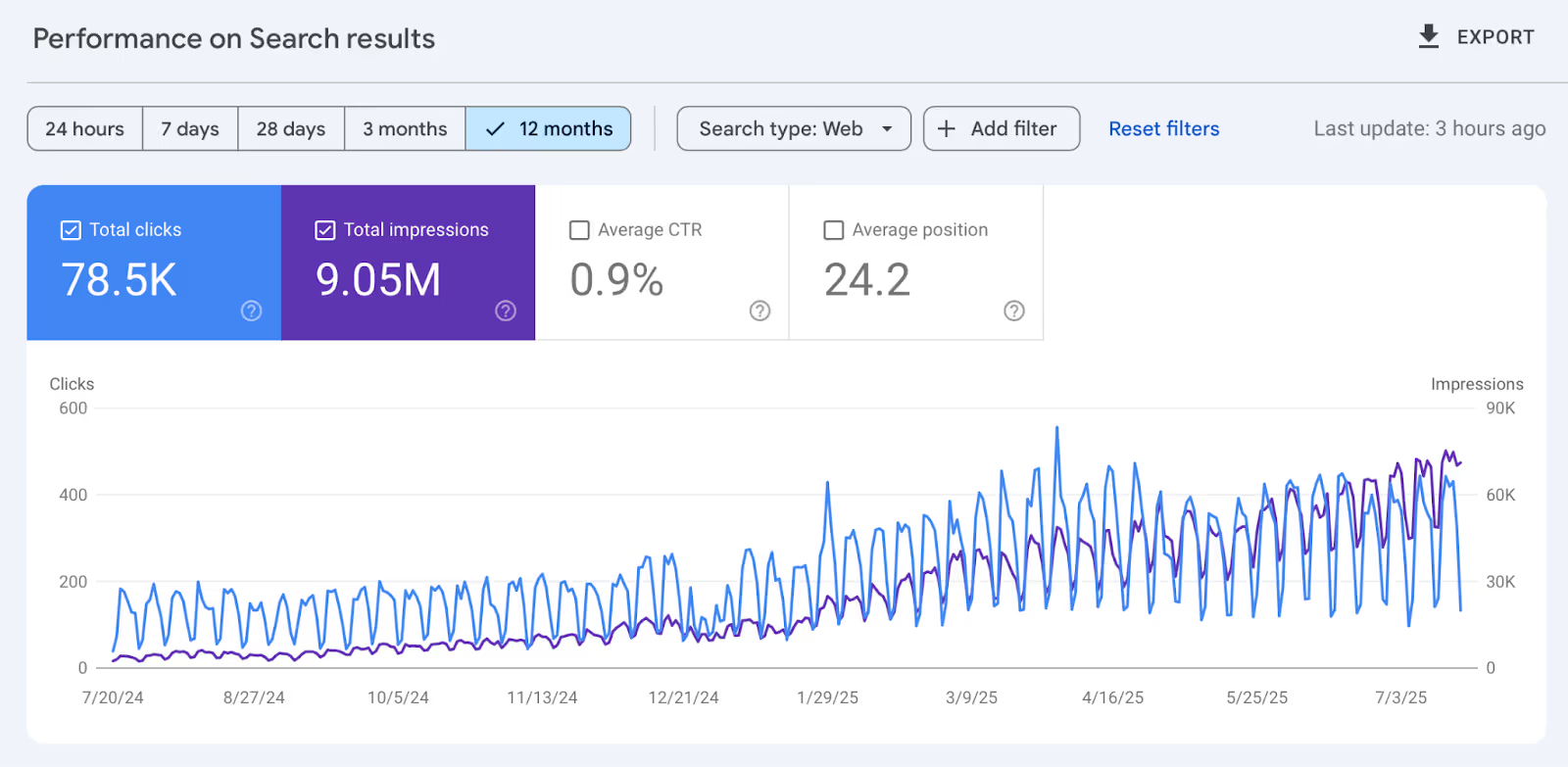
I sat down with Iga Wojtowicz, content lead at Salesforge to understand how her lean content team combined search insights with a modular product stack to turn SEO into a self-feeding flywheel that powers their customer acquisition.
1. Aggregating industry data
Iga and her team compiled a dataset of over 700 sales tools by extracting data from company websites and review sites like Clutch and G2.
Doing so allows them to show up in front of interested customers and even drive traffic to their site from competitor brand mentions.
In fact, Iga points out,
“All the programmatically built pages bring in a ton of traffic into our funnel and allow us to bid on competitor-branded keywords.”
A widget for their AI agent Frank prompts users to sign up to Salesforge.
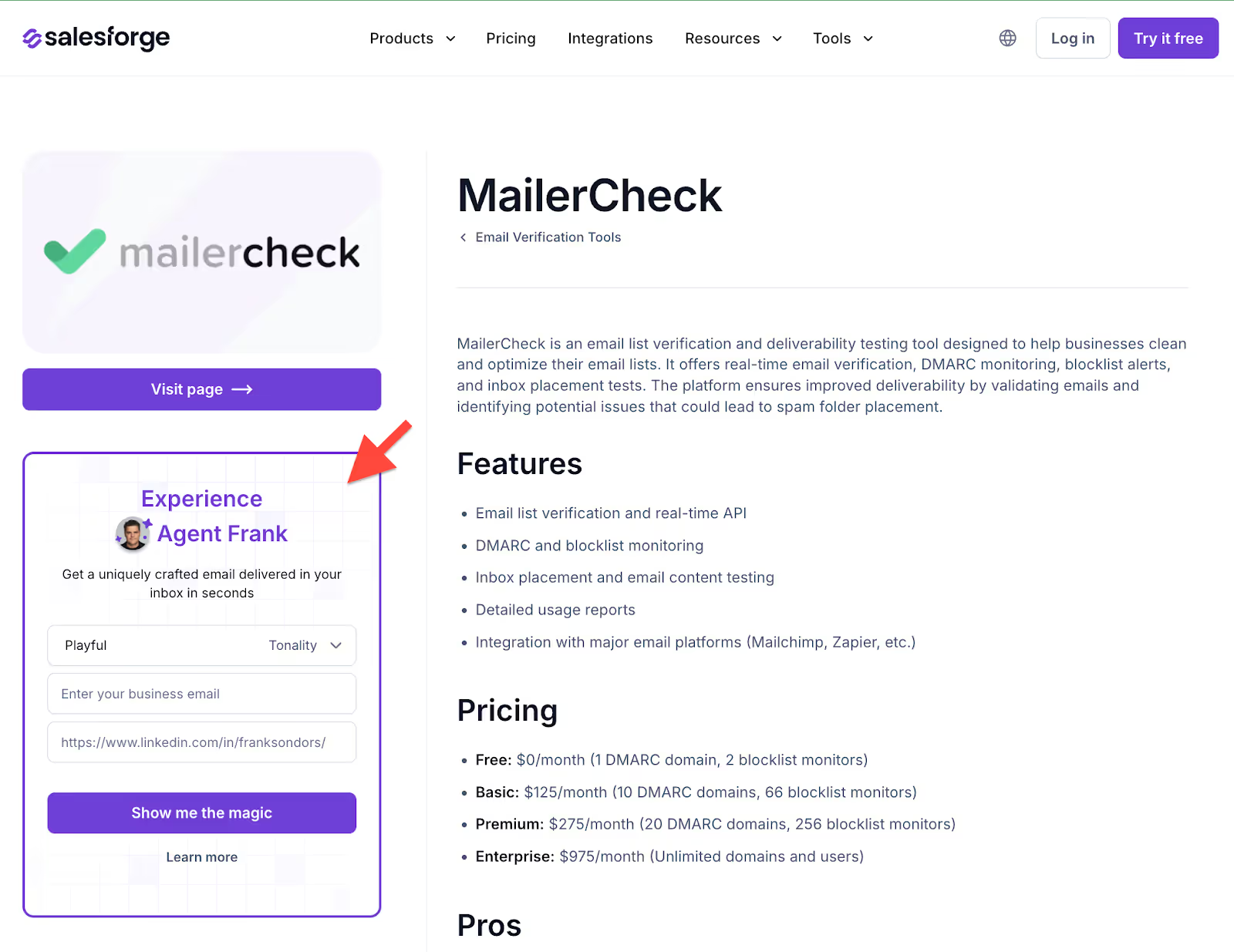
Salesforge tools are listed in first place under several categories they serve.
For example, Leadsforge leads the lead generation and prospecting page.
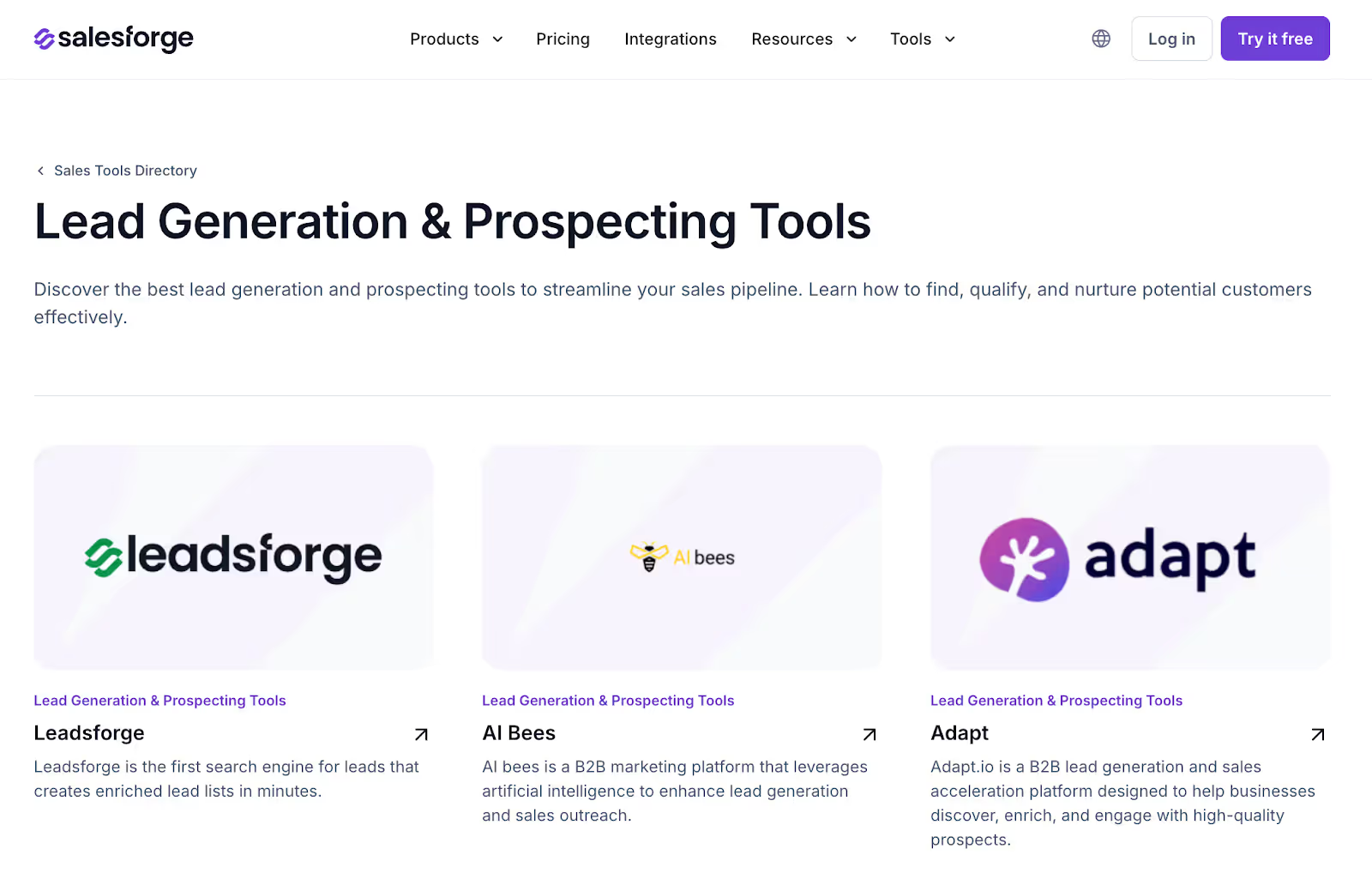
Instead of going article by article, Iga and her team doubled down on a programmatic SEO strategy using scalable templates to create thousands of landing pages targeting high-intent, long-tail queries.
Free downloadables like templates and worksheets often have large search volume and intent, and Iga was able to crack down on both.
Salesforge has continued to sustain traffic growth by focusing on usage intent, even as AI search features have significantly reduced clicks for most websites.
2. Agency directory to attract one target segment (and links)
Salesforge repeated the same playbook with sales and marketing agencies, a strong affiliate channel for referral customers.
Potential customers can book a call with the agency on their landing pages, thus incentivizing the agencies to keep their information updated on Salesforge’s landing page.
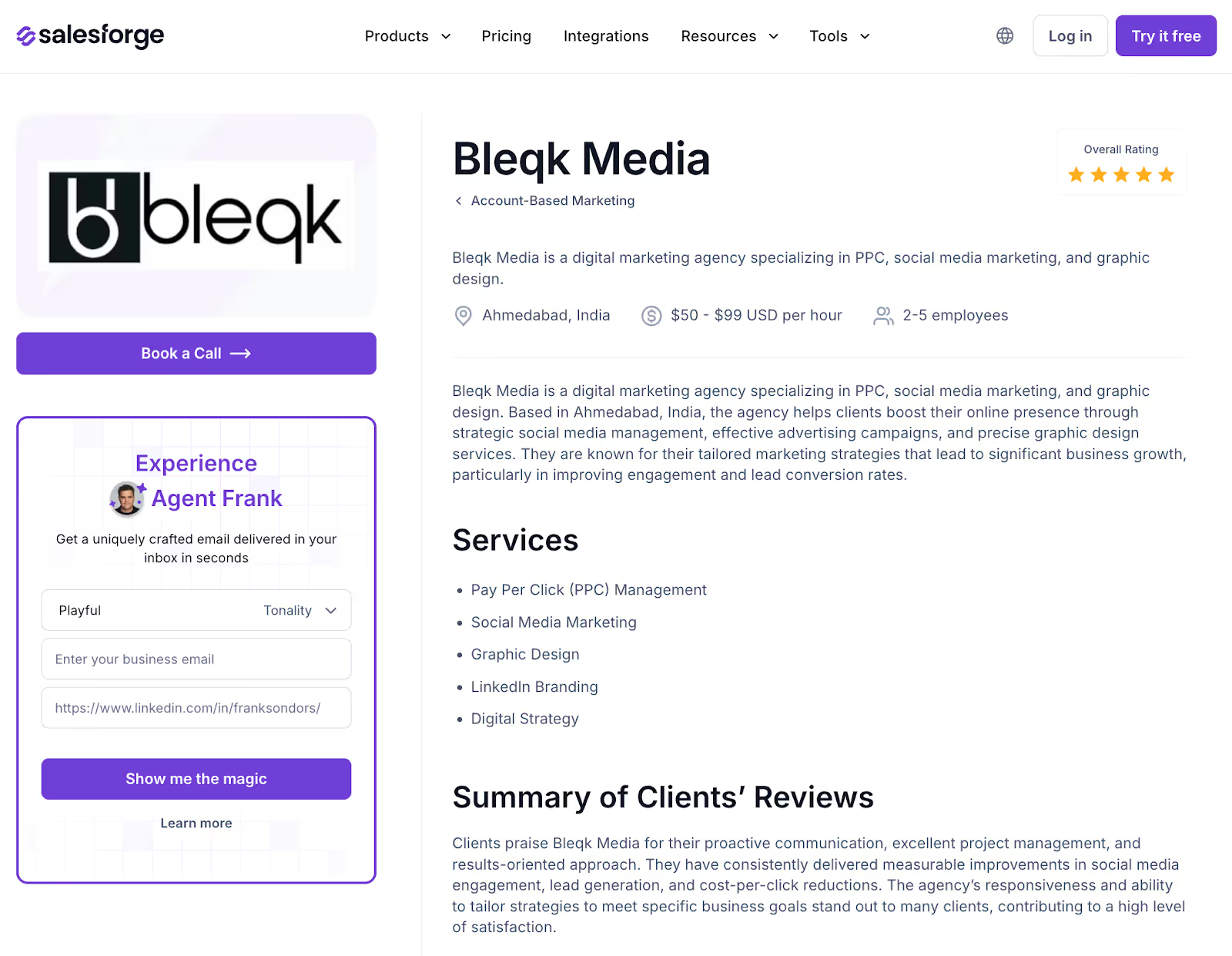
This also built a growth loop where agencies brought them awareness and customers.
Their strategy has led to natural backlinks, recurring traffic, and improved domain authority.
3. Compounding brand power
Since Salesforge launched, they’ve added six additional products: Mailforge, Infraforge, Warmforge, Leadsforge, Primeforge and Agent Frank (an AI SDR).
Most companies build additional tools under the same suite once they have product-market fit. Salesforge followed this strategy but launched a new domain for each tool.
The Forge branding likely helps their target users draw the connection between tools but I’m curious why they decided to distribute website authority rather than concentrate it under a single domain.
As a result of their foray into several tools under the Forge brand, branded traffic has increased by 340% since last year.
Key takeaways and results
Since December 2024, Salesforge has been using Surfer’s data-driven insights to push out content programmatically at scale and then optimizing pages for high intent keywords.
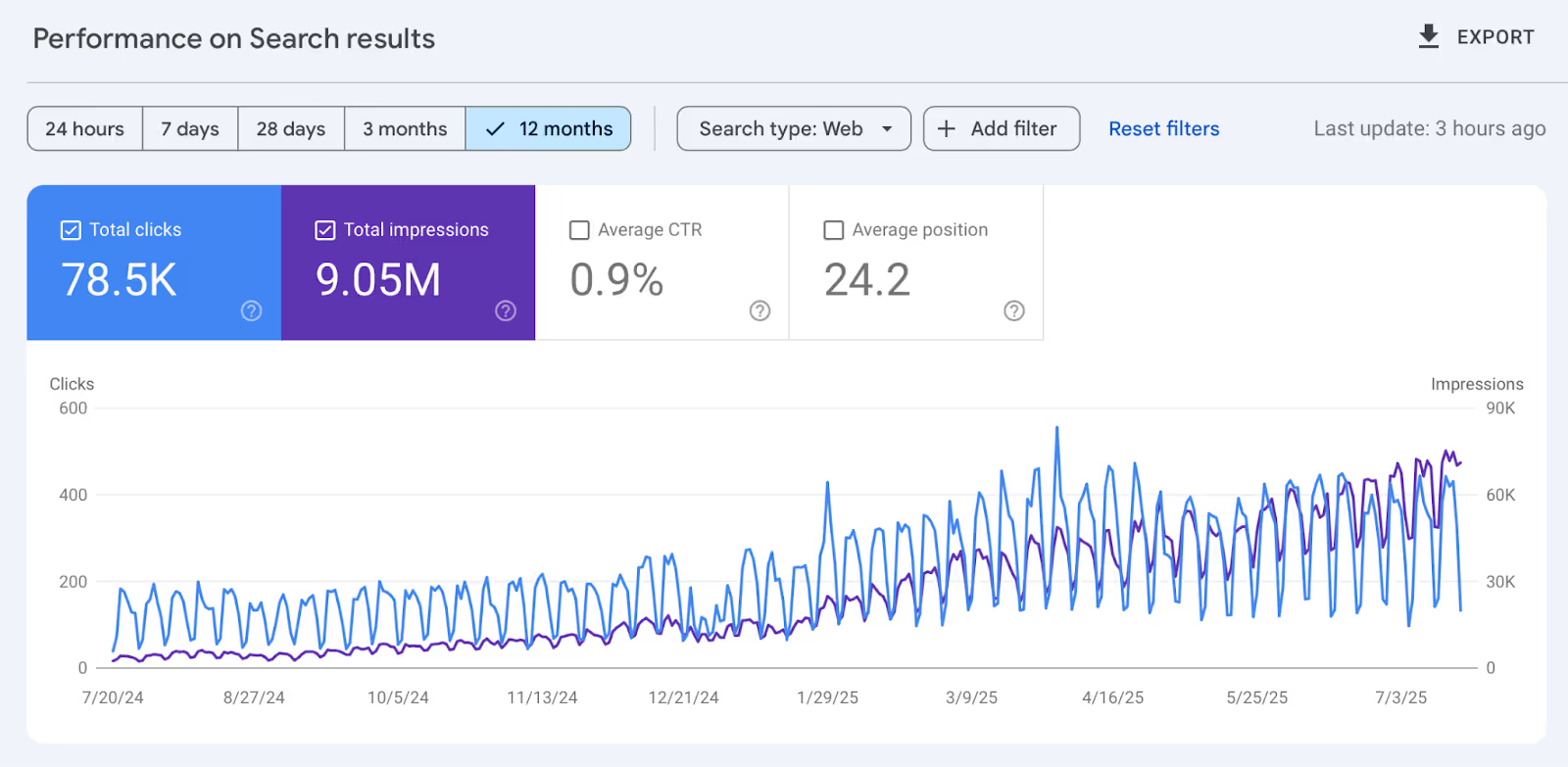
This growth strategy has increased their organic traffic by over 100% in the last 12 months.
In a highly competitive space dominated by well-funded companies, Iga and her team have done remarkably well to turn programmatic SEO into a true flywheel.
Top-of-funnel traffic drives branded search for them and competitiors, which drives tool adoption, which feeds deeper into their outbound stack of several tools.
I asked them about AI search and Iga had this to say,
What we’re doing is increasing our presence on Reddit, acquiring backlinks from Wikipedia and focusing more on FAQ-style content that’s LLM-friendly.
Surfer’s AI templates can help you create programmatic pages at scale to recreate Iga’s content strategy.
Say for example, you have an apartment rental marketplace. You can create multiple pages on the best areas to live in for cities where you have supply.
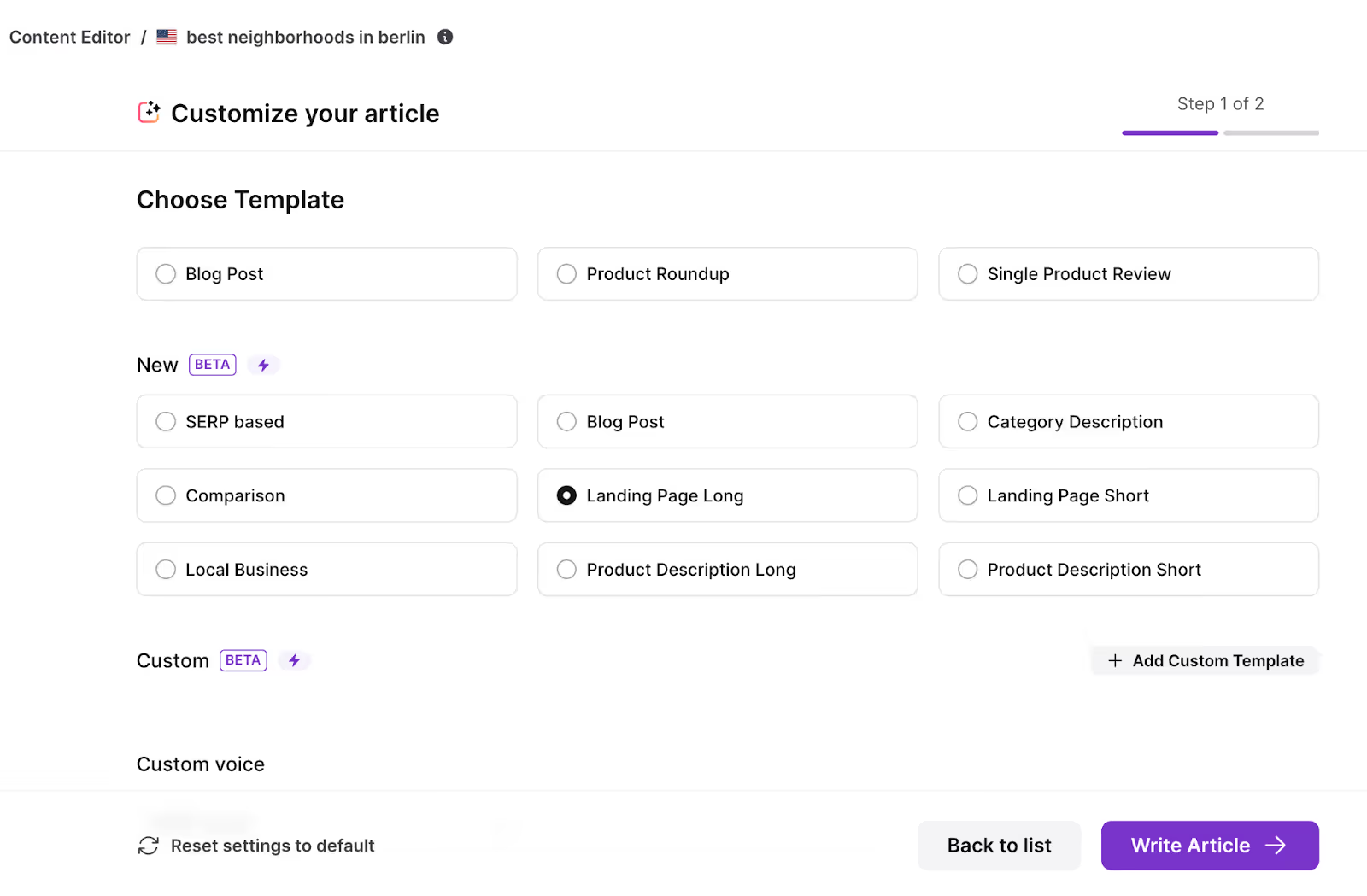
This can help you capture intent and funnel users to your listings where they can convert.
Programmatic SEO offers a scalable, defensible growth strategy at a time when AI-generated answers are eroding clicks.
As traditional top-of-funnel traffic diminishes, pSEO ensures your pages can still show up in front of target audiences.
You can try Surfer’s AI templates here.




.avif)